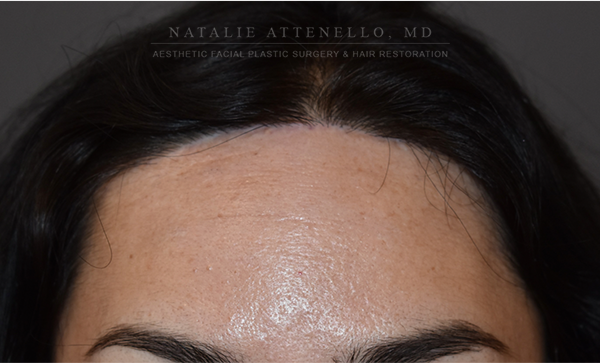
years as more individuals seek to enhance their facial aesthetics. This surgical procedure can effectively shorten the distance between the hairline and the eyebrows, creating a more balanced and harmonious appearance. However, before undergoing this procedure, prospective patients often wonder about the associated costs. In this article, we will delve into the various factors influencing the cost of forehead reduction surgery, typical price ranges, financing options, and other considerations.
Understanding Forehead Reduction Surgery
Forehead reduction surgery is typically performed under local or general anesthesia and involves repositioning the hairline and excising excess forehead skin. The procedure aims to reduce the overall height of the forehead and may also include other techniques to enhance facial features. Some patients may choose to combine this surgery with other procedures such as brow lifts or hair transplants for comprehensive facial rejuvenation.
Reasons for Forehead Reduction Surgery
Individuals consider forehead reduction surgery for various reasons, including:
- Genetics: Some people have naturally high hairlines that may not align with their facial proportions.
- Aging: With age, the hairline can recede, leading to an increased forehead appearance.
- Gender Dysphoria: Transgender individuals may pursue this surgery as part of their transition to achieve a more feminine appearance.
- Personal Preference: Many individuals seek the procedure simply to improve their self-image and boost their confidence.
The Cost of Forehead Reduction Surgery
The cost of forehead reduction surgery can vary significantly depending on several factors. On average, patients can expect to pay between $3,000 to $10,000 for the procedure. However, it’s essential to understand the elements that contribute to this price range.
Factors Influencing the Cost
- Surgeon’s Experience and Reputation
- The skill and expertise of the surgeon play a crucial role in determining the cost. Highly experienced and board-certified surgeons often charge higher fees due to their track record and the quality of care provided. Choosing a qualified surgeon is paramount, as it directly impacts the outcome of the surgery.
- Geographical Location
- The cost of living and the demand for cosmetic surgery in a specific region can significantly influence pricing. Urban areas with higher demand for cosmetic procedures often have higher costs than rural regions. For example, a forehead reduction surgery in New York City may be more expensive than in a smaller town.
- Facility Fees
- The type of facility where the surgery is performed can also affect the overall cost. Outpatient surgical centers may charge lower fees than hospitals. Additionally, accredited surgical centers may have higher costs due to enhanced safety measures and better facilities.
- Anesthesia Costs
- The type of anesthesia used during the procedure—local or general—can influence costs. General anesthesia typically incurs higher fees due to the need for an anesthesiologist and additional monitoring during the procedure.
- Additional Procedures
- Some patients opt to combine forehead reduction surgery with other aesthetic procedures, such as brow lifts or rhinoplasty. Combining surgeries can lead to increased costs but may offer patients a more comprehensive solution.
- Postoperative Care and Follow-up Visits
- The cost of forehead reduction surgery may also include expenses related to postoperative care, such as follow-up visits, medication, and any necessary revisions. It’s crucial to clarify with the surgeon what these costs entail.
- Insurance Coverage
- Most insurance plans do not cover cosmetic surgeries, including forehead reduction. However, some plans may cover portions of the surgery if deemed medically necessary (e.g., if the high forehead leads to functional issues). Patients should check with their insurance provider to understand coverage options.
Typical Cost Breakdown
To provide a clearer understanding of the cost components, here’s a typical breakdown of expenses associated with forehead reduction surgery:
| Cost Component | Estimated Cost Range |
|---|---|
| Surgeon’s Fee | $2,000 – $7,000 |
| Facility Fee | $500 – $2,500 |
| Anesthesia Fee | $500 – $1,500 |
| Postoperative Care | $200 – $1,000 |
| Total Estimated Cost | $3,000 – $10,000 |
Financing Options
Given the high costs associated with forehead reduction surgery, many patients explore financing options to make the procedure more accessible. Here are some common financing avenues:
- Payment Plans
- Many cosmetic surgery clinics offer payment plans that allow patients to spread the cost over several months. This option can make the procedure more manageable financially.
- Medical Financing Companies
- Several companies specialize in providing loans for medical procedures. These loans often come with flexible repayment terms and competitive interest rates. Patients can apply for financing before scheduling their surgery.
- Credit Cards
- Some patients may choose to use credit cards to cover the costs. However, it’s essential to consider interest rates and repayment terms to avoid accumulating debt.
- Health Savings Accounts (HSAs)
- If patients have an HSA, they can use those funds to cover the surgery costs. HSAs offer tax advantages and can help mitigate expenses.
- Personal Loans
- Some individuals opt for personal loans from banks or credit unions to finance their surgery. Interest rates and repayment terms will vary based on creditworthiness.
Preparing for Forehead Reduction Surgery
Proper preparation is essential for ensuring a successful outcome. Here are steps to take before undergoing the procedure:
- Research Qualified Surgeons
- Take the time to research and consult multiple board-certified plastic surgeons. Review their credentials, experience, and patient reviews to find a suitable surgeon.
- Schedule a Consultation
- During the consultation, discuss your goals, concerns, and expectations. The surgeon will assess your facial structure and determine whether you are a suitable candidate for the procedure.
- Ask Questions
- Don’t hesitate to ask the surgeon about their experience, the techniques they use, potential risks, and expected recovery times. Understanding the procedure fully can help ease any anxiety.
- Understand the Risks
- Like any surgical procedure, forehead reduction carries risks, including infection, scarring, and changes in sensation. Discuss these risks with your surgeon to make an informed decision.
- Follow Preoperative Instructions
- Follow any preoperative instructions given by your surgeon, such as avoiding certain medications, smoking cessation, and dietary restrictions, to minimize risks during surgery.
Recovery and Results
Recovery from forehead reduction surgery typically involves a period of swelling and bruising, lasting for a few weeks. Patients may experience discomfort, which can be managed with prescribed pain medication. Here’s what to expect during the recovery process:
- Initial Recovery
- Most patients can return to light activities within a week. However, more strenuous activities should be avoided for several weeks to ensure proper healing.
- Follow-Up Appointments
- Regular follow-up appointments with the surgeon are essential to monitor healing and address any concerns.
- Final Results
- While some swelling may persist for a few months, the final results typically become apparent within six months to a year. Patients should keep in mind that individual healing times may vary.
Conclusion
Forehead reduction surgery can significantly enhance facial aesthetics, boosting self-esteem and confidence for many individuals. However, understanding the associated costs and factors influencing these prices is crucial for prospective patients. With average costs ranging from $3,000 to $10,000, potential patients should carefully consider their options, including financing methods and insurance coverage.





